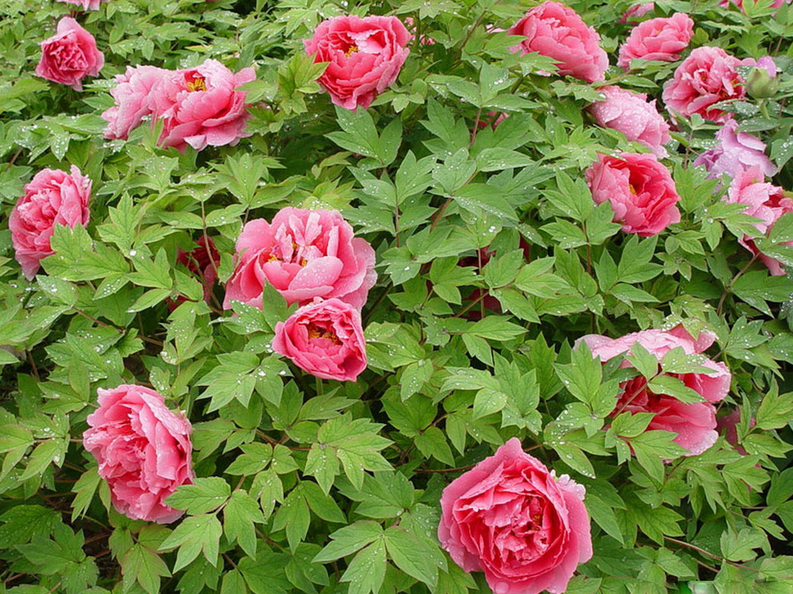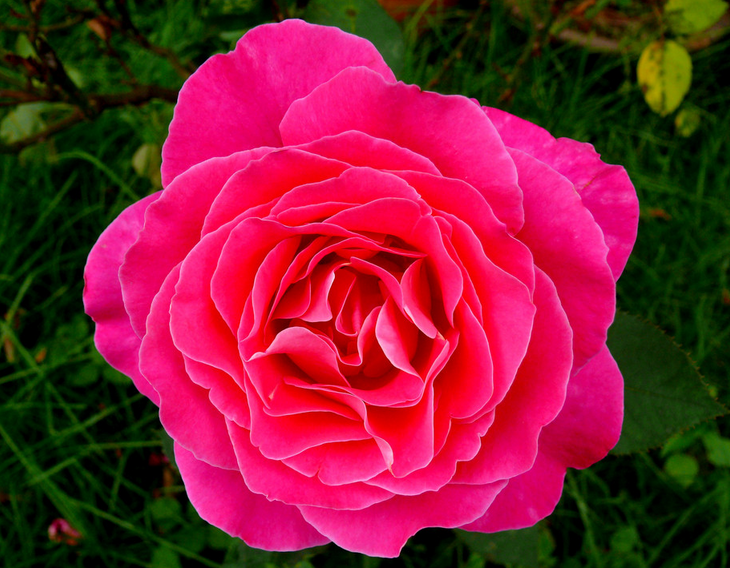Culture methods and matters needing attention of Paeonia lactiflora
Peony is known as "flower immortal" and "flower phase", and is listed as one of the "six famous flowers". It has been regarded as the flower of love since ancient times. Many people want to raise peony flowers on their own, so what should they do when raising peony flowers? Are there any methods and precautions? Next, let's learn more about it with the editor of the decoration network.

Culture methods and matters needing attention of Paeonia lactiflora
Culture methods of Paeonia lactiflora
1. Planting time of Paeonia lactiflora: Paeonia lactiflora likes sunshine and cold tolerance, and it should be cool and afraid of heat when the temperature is high, and it does not grow well at high temperature in summer. Autumn is the best time to plant peony.
2. Soil quality: when planting peony, you should choose sunny land with high topography and good drainage, and do not plant it in low-lying places where it is easy to accumulate water. Paeonia lactiflora is a fleshy root, so we should choose loose, fertile and slightly acidic sandy soil when planting. It is not suitable to grow in alkaline soil. If the soil is too alkaline, it will cause leaf yellowing, even shrinkage and death.
3. Main points of cultivation: when cultivated in open field, manure should be applied to turn the stables deeply, and the beds should be arranged after fining. Generally, the height of the border is 10-15 cm, the width of the border is 70 cm, and the length is unlimited. The distance between cultivated plants is 80 cm. During cultivation, dig holes according to the length and size of the root system, pay attention to the root should be extended, should not be too deep, cover the soil to cover the top bud 4cm for the degree, after planting, pour water once, choked soil overwintering.
4. Fertilizer and water management: peony does not need to be watered frequently except for natural precipitation. Usually only in the most water demand before and after flowering and in case of spring drought before and after appropriate watering, in order to supplement the lack of soil moisture, each watering should not be too much. Topdressing should be controlled, three times a year, and the first time it is quickly drawn out in the new shoots. When the leaves and buds are stretching, they mainly apply quick-acting fertilizer, which is called flower-promoting fertilizer.
5. Shaping and pruning: in order to make peony flowers colorful and robust, shaping and pruning is very important. Peony plastic surgery mainly includes fixing stem, pruning, removing buds, thinning buds, cutting off residual flowers and so on. Paeonia lactiflora can be dried after 2-3 years. For the varieties with strong growth potential and exuberant growth, they can be pruned into independent peony. For the varieties with weak growth potential and small number of branches, the thin and weak branches are generally cut off and the strong branches are retained.
6. pest control: the common diseases and insect pests of peony are brown spot, anthrax, rust, root rot and root nodule nematode disease, longicorn beetle, red spider, beetle, mole cricket and so on. The prevention and control of diseases and insect pests should give priority to early prevention, once diseases and insect pests occur. According to the degree of occurrence, according to the above-mentioned dosage, the interval between spraying should be appropriately shortened and the frequency of drug use should be increased.
Matters needing attention in Paeonia lactiflora culture
Paeonia lactiflora can not be transplanted frequently after planting, otherwise it will damage the root and affect the growth and flowering. In order to make the peony grow well, reasonable fertilization is needed every year. After each fertilization, enough water should be irrigated, and the soil should be loosened immediately to reduce water evaporation. Weeding should be often ploughed in the rainy season.
After potted peony, Frosts Descent cut off the withered branches and leaves to prevent the breeding of diseases and insect pests. During the overwintering period, there is no need to move indoors, put it on the balcony or under the eaves where there is plenty of sunshine, and the basin soil should not be too dry.
Before the peony blossoms, after the lateral buds appear, they can be removed in time to concentrate nutrients and promote the beauty of the top bud flowers. After the flower fades, if you do not plan to sow and reproduce, you should cut off the pedicel at any time so as not to seed and consume nutrients.
Take an inventory of Paeonia lactiflora and appreciate the beautiful picture of Paeonia lactiflora
Red peony is the root of Ranunculaceae plants such as Paeonia lactiflora, Paeonia lactiflora, Radix Paeoniae Rubra and so on. Autumn excavation, remove the rhizome, fibrous root and branch root, wash the soil, sun to semi-dry, according to the size of the bundle, and then dry feet. Do you know anything about it? Today, I would like to give you a brief introduction to the small information of Paeonia lactiflora. . Paeonia lactiflora is the dry root of plants such as Paeonia lactiflora, which is cylindrical, nearly equal in thickness at both ends, slightly curved, 10-36 cm long and 6-19 mm in diameter. The surface is dark brown or dark brown, rough, with laterally protruding lenticels and root marks, with thick and deep longitudinal wrinkles, the skin is easy to fall off when rubbed by hands, showing a white or light brown skin. Radix Paeoniae Rubra is hard and brittle and easy to break. The section is flat, pink-white or yellowish-white, the cortex is narrow, pink-like, the central pulp is small, the xylem rays are obvious, and sometimes there are fissures. The breath is slightly fragrant and the taste is slightly bitter. The root strip is thick and long, the outer skin is easy to fall off, the wrinkles are thick and deep, the cross section is white and the powder is big. The root of Paeonia lactiflora contains paeoniflorin. The root of Paeonia lactiflora contains volatile oil, fatty oil, resin, tannin, sugar, starch, mucus, protein and so on. It also contains benzoic acid about 0.92%. . The growing environment of Paeonia lactiflora mainly produces Inner Mongolia, Hebei, Liaoning, Heilongjiang and Jilin. Shaanxi, Shanxi, Gansu, Qinghai, Hubei, Sichuan, Guizhou, Yunnan and other places are also produced. Among them, the root of Paeonia lactiflora produced in Northeast, North China and Northwest China is mainly the root of Paeonia lactiflora, and part of it is the root of Paeonia lactiflora. The root of Paeonia lactiflora in southwest China is mainly the root of Sichuan Red Peony. . The main value of Paeonia lactiflora is medicinal, which has the effect of nourishing blood and regulating menstruation, cooling blood and relieving pain. Paeoniae rubra is sour, bitter and cold. Promoting blood circulation and dispelling blood stasis, clearing liver and relieving pain. For blood stasis abdominal pain, amenorrhea, dysmenorrhea, chest pain. [Korean medicine] Shanzhuan pressure, Tao Baizha, the three: root treatment of irregular menstruation, red leucorrhea, amenorrhea, blood stasis abdominal pain, chronic enteritis, diarrhea, stomach spasm, intercostal neuralgia, joint swelling, carbuncle, sore, etc. [Korean medicine] Dog ginseng, grass peony: root for irregular menstruation, red leucorrhea, amenorrhea, blood stasis abdominal pain, chronic enteritis, diarrhea dysentery, stomach spasm, intercostal neuralgia, joint pain, carbuncle, sore and other symptoms. Root treatment of irregular menstruation, red leucorrhea, amenorrhea, blood stasis abdominal pain, chronic enteritis, diarrhea, stomach spasm, intercostal neuralgia, joint pain, carbuncle, sore and other diseases. [Miao Yao] Shaoyao ou: radical cure of menstrual abdominal pain. . It is concluded that the petals of Paeonia lactiflora are Obovate, the disk is shallow cup-shaped, and its roots are made of traditional Chinese medicine with antispasmodic and analgesic medicinal value. Ranked first among herbs, it is known as "Flower Fairy" and "Flower appearance", also known as "May Flower God". Because it has been regarded as the flower of love since ancient times, it has been respected as the representative flower of Qixi Festival. Today, our introduction of Red Peony in Paeonia lactiflora is over. Thank you for your appreciation.
- Prev

The prevention and control of peony diseases and pests can help you cultivate peony flowers easily.
In the process of peony culture, peony flowers are often attacked by diseases and insect pests due to improper culture and other reasons. So the editor of the decoration network reminds you that when raising peonies, you must first master some relevant knowledge.
- Next

The culture method of rose flowers embellishes a colorful life.
Rose Rong beautiful, diverse, often blooming at 04:00, deeply loved by people, known as the queen of flowers, many people want to raise their own rose. So what should be done when raising rose flowers? Are there any methods and precautions?
Related
- Fuxing push coffee new agricultural production and marketing class: lack of small-scale processing plants
- Jujube rice field leisure farm deep ploughing Yilan for five years to create a space for organic food and play
- Nongyu Farm-A trial of organic papaya for brave women with advanced technology
- Four points for attention in the prevention and control of diseases and insect pests of edible fungi
- How to add nutrient solution to Edible Fungi
- Is there any good way to control edible fungus mites?
- Open Inoculation Technology of Edible Fungi
- Is there any clever way to use fertilizer for edible fungus in winter?
- What agents are used to kill the pathogens of edible fungi in the mushroom shed?
- Rapid drying of Edible Fungi

